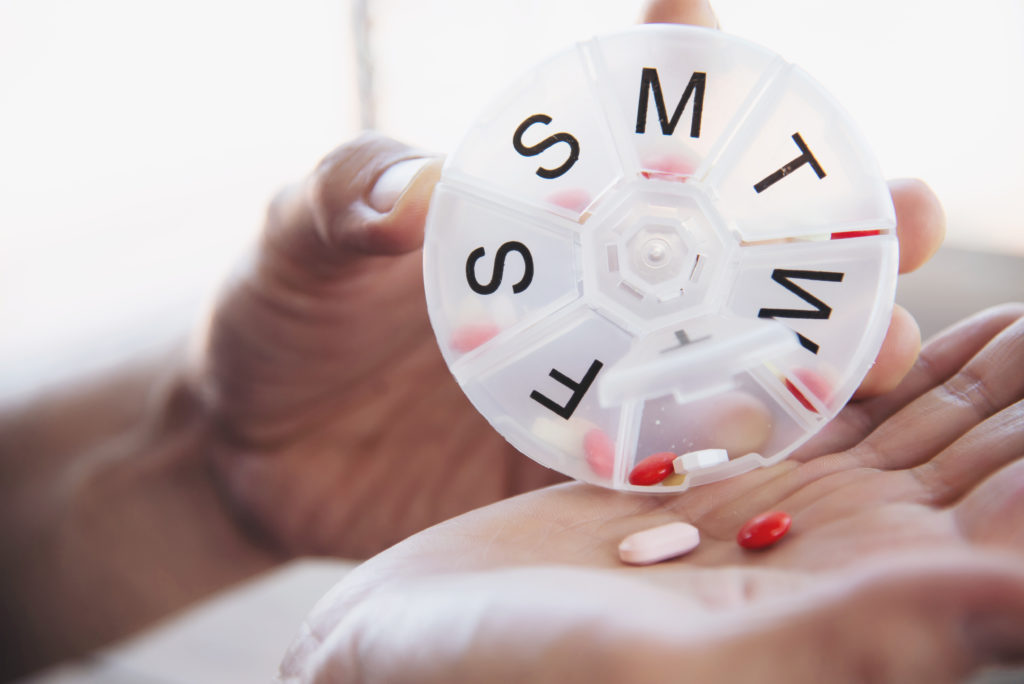Believe it or not, for the majority of practices and patient populations, poor patient adherence is still a major issue. Ensuring that a patient understands and sticks to their recommended medication regimen is always a concern for practitioner’s across the country, and it is only getting more difficult as patients become more self-aware.
Here’s a quick snapshot of what this looks like today:
- Only half of patients follow medication regimens. Adherence is even worse among some populations such as heart disease and chronic mental health patients.
- Between 20 and 30 percent of prescriptions are never filled at all. People who do initially take prescription medications typically take only about half the prescribed doses before stopping.
- Over 100,000 deaths a year could be prevented by better medication adherence. For example, if 70% of hypertension patients followed treatment regimens, 46,000 deaths could be avoided every year.
- Low adherence costs the U.S. healthcare system between $100 and $289 billion every year.
- Poor adherence also leads to harder-to-measure negative “ripple” effects like lengthier treatments, increases in hospital visits and the duration of inpatient stays.
Fixing the issue has unsurprisingly been a major focus of health care providers for decades – why, then, do these numbers still look so bad?
For starters, non-adherence can mean several different things. Non-adherent patients fall into different groups, including those who:
- Don’t fill their prescriptions.
- Do fill their prescriptions, but then don’t take them as prescribed.
- Follow treatment plans initially, but then don’t refill prescriptions or stick with treatment.
For example; the rate of patients who persist in taking medication for chronic conditions drops significantly after 6 months of therapy.
Each of these groups responds differently to interventions designed to increase medication adherence.

Secondly, many non-adherence interventions simply haven’t worked: a Cochrane review of almost 200 randomized controlled trials found that only a small minority actually made an impact on both adherence and clinical outcomes.
Why?
A number of reasons, including:
- Adherence and it’s various causes are hard to measure accurately (non-adherent patients don’t always respond to research requests, and healthcare professionals also tend to overestimate patients’ adherence).
- Multiple factors influence an individual patient’s adherence.
- These factors vary widely across clinical practice areas, regions, and patient populations.
- However, over time, a picture has emerged of the most common barriers to good adherence.
Depending on your practice and patients, one factor might be more prevalent than the others. However, it’s likely that resolving one or more of the following patient adherence roadblocks will provide a powerful start to improving adherence at your practice.
The Top 6 Roadblocks to Patient Adherence Facing Practitioners Today
1. Knowledge & Health Literacy
According to U.S. Government data, almost 9 out of 10 adults may lack the skills needed to understand the reasoning behind treatment protocols and manage their own health.
Patients need to be engaged and interested in their health status to consistently comply with treatment recommendations. They also need to understand:
- The possible impact of their diagnosis.
- How the prescribed treatment will help.
- Precise instructions on how to comply with treatment protocols.

This may seem obvious, but health literacy interventions have shown to be one of the most impactful solutions to poor patient adherence. In fact, they are especially effective for groups already at risk for low adherence, such as lower-income and minority patients.
For providers, overcoming low health literacy can include:
- Allowing time to answer questions and creating a shame-free environment.
- Using plain language wherever possible, simplifying written communication or using more accessible picture or video instructions.
- Asking patients to repeat instructions.
- Following up after appointments to confirm understanding.
2. Negative Beliefs
Low adherence is most common among people with conditions that have fewer obvious symptoms – people are far more likely to take pain-relief prescriptions than those for less “visible” conditions, like high cholesterol and mental health, largely because the value of taking the medicines is not made obvious day-to-day.
Negative beliefs about medicines are much stronger predictors of poor adherence than practical barriers such as cost, convenience, and time.
Patient beliefs surrounding the potential impact of care and their trust in providers and medications have a major impact on their willingness to continue treatment. Put simply; people who don’t value the results of treatment are unlikely to feel that the cost, inconvenience, and side effects of medication use are worth it.
Some groups, such as patients with depression, are especially likely to be deterred by beliefs about the value of care, putting them at even greater risk for medication nonadherence.

Providers can’t always change beliefs about care. However, health-literacy interventions can also help influence patient beliefs about medicine. Ensuring patients leave appointments feeling that their providers have a true concern for them may also help inspire trust.
Ensuring that patients can answer the following big questions before leaving an appointment can also make an impact:
- What is my health problem? Why am I taking this medication, and how will it help?
- What, specifically, do I need to do to follow the regimen?
- Why is it important that I take it and continue to take it?
3. Dissatisfaction with Treatment
Not seeing results or feeling like a treatment isn’t “working” gets in the way of positive experiences with medications.
Side-effects have also been consistently associated with decreased adherence: patients who experience aversive reactions are much less likely to continue their treatment.
This isn’t always within the control of care providers, however…
- Adopting customer service approaches which listen to patient experiences with medication.
- Helping patients proactively manage side effects.
- Reiterating the goals of treatment and the impact of adherence.
All of these things can help overcome some barriers related to the treatment itself.
4. Cost
The price of prescriptions can be a major deterrent, especially for patients without insurance coverage.
For example, in a 2018 study of oncology patients, 32% of patients didn’t fill prescriptions that cost between $100 and $500 out of pocket. When the cost was higher than $2,000, less than half fill their prescriptions.
The impact of price on adherence more generally is hard to measure, and cost may not be the most important metric for providers to prioritize since it’s hard to influence at the level of an individual treatment center.
Still, providers can and should work with patients to determine whether they will have difficulty paying for their medications and prescribe generic alternatives where possible.
5. Convenience & Effort (of both Filling and Taking Medication)
No one really enjoys filling prescriptions or taking medication. Unsurprisingly, when the obligations of care become too complex or burdensome, adherence drops off.
When patients are taking dozens or more pills a day at multiple times to manage complex or multiple conditions, adherence can quickly become an annoying practical challenge.
Adherence tools in the packaging or delivery of meds, such as customizable multimed blister cards, can also simplify complex treatment plans and help patients keep track.

Changing the way patients fill prescriptions can also make a big impact. In one study, patients using a local pharmacy adhered only 47% of the time, but patients offered a mail-in-order were adherent 74% of the time.
Point of care prescription availability goes even further to improve access to medication by removing the extra step of filling a prescription entirely, offering patients the chance to fill prescriptions right in the office or clinic.
6. Memory
There’s often a major disconnect between the meds patients say they’re taking, and the doses they actually consume.
In one survey of over 40,000 people, 85% of patients said they take their medications as directed, and that they think it’s important to take medication. The same survey found that the people least likely to actually take meds were also the most likely to overestimate how often they were taking them – in fact, only about a quarter of those surveyed were actually taking enough medication, according to prescription filling records.
Forgetfulness seems like a simple barrier, but human behavior is harder to influence than any of the practical barriers on this list. Taking medication and following treatment protocols take consistent attention to an often-boring task.

Physicians can use refill tracking to measure adherence – seeing how many refills a patient has left can be an indicator of who is following treatment suggestions, and who might need more support. Reminder programming including apps, emails, and phone calls, can all help maintain consistent adherence.
For patients with memory impairments or those following complex medication regimens, memory-enhancing packaging (from simple daily pill compartments through more technologically advanced “smart pills”) may be helpful.
Identifying the Top Roadblocks For Your Organization is a Key First Step Towards Improving Health Adherence
As a big picture, patient experience is complicated, but some of the most common barriers to adherence are relatively simple to identify and address, such as:
- The patient’s beliefs about the treatment.
- The patient’s understanding of the diagnosis and how medication helps the prognosis.
- The financial, time, and physical burdens of adherence.
- Whether treatment instructions remain top of mind.
Tackling one or more of these areas leads not only to improvements in medication use, but also to better overall patient health, better patient care experiences, and reduced per capita costs for patients and providers alike.
Of course, this is only the tip of the patient adherence iceberg and the most important areas will vary from practice-to-practice –if you have ideas to add, especially on the barriers most important for YOUR patients, we’d love to hear from you in the comments below.
To learn more or start working on improving adherence, check out our patient adherence improvement checklist or schedule a demo of our workstation.
